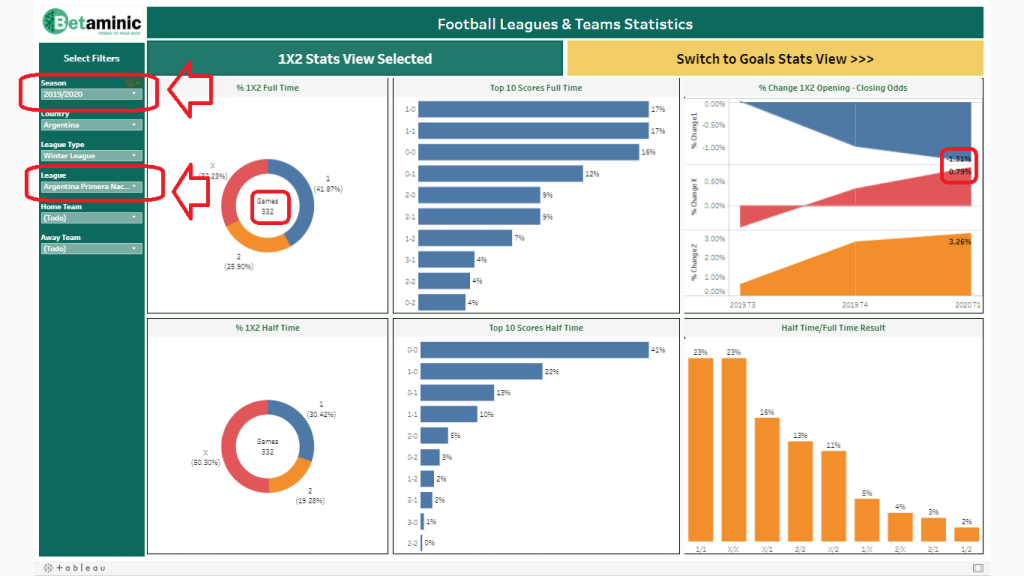Historical statistics form the backbone of modern football analysis. By studying past performances, patterns, and matchup histories, analysts can anticipate how teams may behave in future fixtures. These data-driven insights help identify strengths, weaknesses, trends, and potential match outcomes more accurately than relying on intuition alone. Understanding how to interpret historical stats is essential for making informed predictions and evaluating football games with greater precision.
Understanding the Role of Historical Football Stats in Match Analysis
Historical football stats allow analysts to observe long-term trends, spot recurring patterns, and evaluate overall team reliability. A single match can be misleading, but aggregated historical data smooth out randomness and reveal a team’s true performance level. Metrics such as goal averages, defensive errors, and expected goals help forecast how a team might perform against specific opponents or in particular environments.
These statistics also highlight seasonal momentum and show how a team adapts to tactical changes or player rotation. By breaking down performance into categories, analysts gain a clearer view of what influences match results.
Key Categories of Historical Stats to Examine
Football analysis depends on several types of historical metrics. These categories reveal how teams build attacks, prevent goals, and maintain consistency over time.
Recent Form Performance
Short-term form is among the most predictive stat categories. Examining a team’s results over the last five to ten games provides insight into momentum, morale, and tactical rhythm. A team on a winning streak often carries elevated confidence, increased chance creation, and greater resilience during stressful moments. Conversely, a team in poor form may suffer from defensive lapses or reduced scoring efficiency.
Offensive and Defensive Metrics
Digging deeper into attack and defense metrics helps refine predictions. Offensive stats include shot creation, expected goals, key passes, and conversion rates. Defensive metrics encompass tackles won, errors leading to goals, and expected goals against.
Under certain conditions, these stats reveal how reliable a team is when facing different match scenarios. A side with strong offensive stats but weak defensive discipline may excel against passive opponents but struggle against high-pressure teams.
Comparing Head-to-Head Performance Through Historical Data
Head-to-head records can highlight psychological and tactical mismatches. Some teams historically dominate certain opponents due to style clashes, formation advantages, or mental edges. Reviewing past results in this matchup helps predict whether a pattern might continue, especially if both teams retain similar tactical identities.
While these comparisons shouldn’t overshadow current form, they provide valuable supporting context for evaluating risk and likelihood in prediction models.
Integrating Player Availability with Historical Statistics
Historical data must be linked with current squad conditions. Player injuries, suspensions, or rotations can significantly alter expected outcomes. For instance, a team with strong defensive stats may perform worse without its primary center-back. Likewise, attacking metrics may drop sharply when a creative midfielder is unavailable.
Matching player availability with historical performance metrics provides a more accurate forecast by accounting for lineup changes and tactical adjustments.
Home and Away Performance Trends in Historical Data
Most teams exhibit performance differences between home and away matches. Home teams often carry stronger offensive metrics due to crowd support, familiar environments, and reduced travel fatigue. Away performances may reveal defensive vulnerabilities or tactical conservatism.
Analyzing home and away splits in historical data provides a more complete understanding of team consistency. It also helps determine whether a team thrives in specific environments or struggles under pressure outside their home stadium.
Using Historical Statistics to Interpret Betting Odds Movements
Betting odds often reflect market expectations, which are influenced by historical data. When bookmakers adjust lines, it usually means they’ve interpreted stats to anticipate outcomes—such as high-scoring trends or defensive weaknesses. Comparing odds movements with historical statistics can reveal whether the market aligns with the data or if opportunities exist to identify undervalued teams.
For example, if historical stats show low-scoring match tendencies but odds favor a high-scoring game, there may be value in betting against the trend.
Step-by-Step Framework for Statistical Football Analysis
A structured approach improves consistency and accuracy. Here is a simple framework:
- Collect team form metrics – Analyze the last 5–10 games.
- Review offensive and defensive stats – Look at goal creation, shot quality, and defensive stability.
- Check head-to-head history – Note recurring patterns or tactical mismatches.
- Evaluate player availability – Identify injuries, suspensions, and returning players.
- Compare home and away splits – Highlight environmental advantages or road weaknesses.
- Study odds movement – Determine how the market is interpreting the same data.
- Synthesize insights – Combine all metrics to form a final analysis.
Following this process ensures that predictions are grounded in evidence rather than emotion.
Reliable Sources for Accessing Historical Football Statistics
There are many platforms that provide accurate and up-to-date football statistics. Websites such as WhoScored, FBref, SofaScore, and Understat offer detailed metrics ranging from basic results to advanced data models like xG and xGA. Many analysts also rely on league databases and club-specific platforms for deeper performance tracking.
If you want to explore additional football information and related insights, you can visit เว็บแทงบอล, which offers a comprehensive range of sports content and betting services.
Summary
Historical statistics provide a reliable foundation for understanding football performance and predicting match outcomes. By analyzing recent form, offensive and defensive metrics, head-to-head results, player availability, and venue trends, readers can form a detailed, multi-layered evaluation. When combined with market odds and structured analysis steps, these insights create a powerful predictive framework.
To enhance accuracy, practice reviewing historical data before each match and compare predictions with actual outcomes. Over time, this approach strengthens analytical skills and improves decision-making across all football evaluations.


